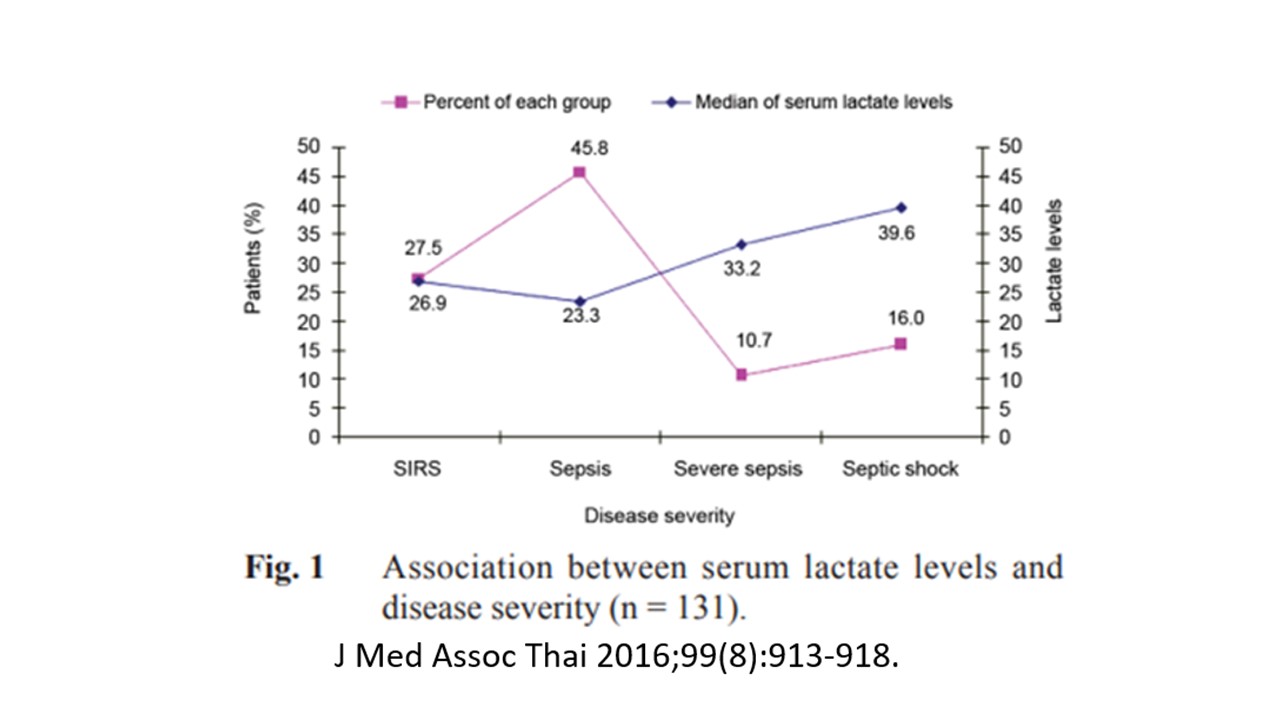3 Major Lactate Considerations in Sepsis
SUMMARY
- Serum lactate measurements have been part of the sepsis bundles since the beginning.
- The recommendation to use and follow serum lactate concentrations are based on weak and low-quality evidence.
- Changes in serum lactate concentrations are not solely reflective of changes in production but also based on lactate clearance from multiple sources.
BACKGROUND
-
An association has been established between serum lactate concentrations and:
- The likelihood of the presence of sepsis
- Sepsis related mortality
- Changes in serum lactate concentrations are thought to be related primarily due to increased production associated with tissue hypoxia and circulatory dysfunction.
- However, to determine true serum lactate concentration changes, one needs to consider the sum of ongoing production and removal of lactate.
- Although improvements in serum lactate concentrations are considered to be related to decreased production based on improved circulatory status, this cannot be totally proven.
- Serum lactate concentrations do not correlate with sepsis disease severity

REVIEW
-
Lactate alone is neither sensitive or specific enough to determine a diagnosis of sepsis.
- Although the Surviving Sepsis Campaign guidelines recommend the measurement of serum lactate concentrations, this remains a weak recommendation with low-quality evidence.
-
Lactate levels greater than or equal to 4 mmol/L had:
- 50% sensitivity & 73.2% specificity of progression to septic shock
- 36% sensitivity & 92% specificity for any death
- 55% sensitivity & 91% specificity for death within 3 days

-
Increases in serum lactate concentrations maybe due to
- Decreases in Clearance
- Increases in Production – separate from circulatory hypoperfusion.
-
Lactate is a normal product of glucose and pyruvate metabolism.
- As glucose metabolism increases or pyruvate metabolism decreases, serum lactate concentrations will increase.
- The inflammatory process of sepsis is associated with increased glycolysis and impaired pyruvate dehydrogenase, leading to lactate generation
-
Lactate Metabolism
- Lactate metabolism occurs within the liver (~ 60%) and kidneys (up to 50%) and to a lesser extent in the heart.
- Lactate metabolism is hindered during circulatory dysfunction seen in sepsis.
-
Other lesser factors affecting serum lactate concentrations are:
- Large volume fluid administration containing lactate
- Inhibition of lactate use via specific drugs (i.e. catecholamine’s in septic shock, metformin, etc.)
CONCLUSIONS
- Sensitivity ranges for serum lactate in sepsis remain in an unimpressive + 65% range and inconsistent.
- The exact lactate level that should trigger aggressive resuscitation efforts is not known.
- Increased production of serum lactate concentrations should not be the only consideration is patients with sepsis.
- Increased production as well as decreased removal of serum lactate all play major roles. Any change in serum concentrations should consider both these factors.
To receive articles like these in your Inbox, you can subscribe to Sepsis Program Optimization Insights.
Erkan Hassan is the Co-Founder & Chief Clinical Officer of Sepsis Program Optimization where he designs & oversees the implementation of solutions to optimize sepsis programs.
To discuss your organization’s Barriers of Effective Sepsis Care, contact Erkan by phone (844) 4SEPSIS (844-473-7747), email (erkan@spo.icu), or video chat.





